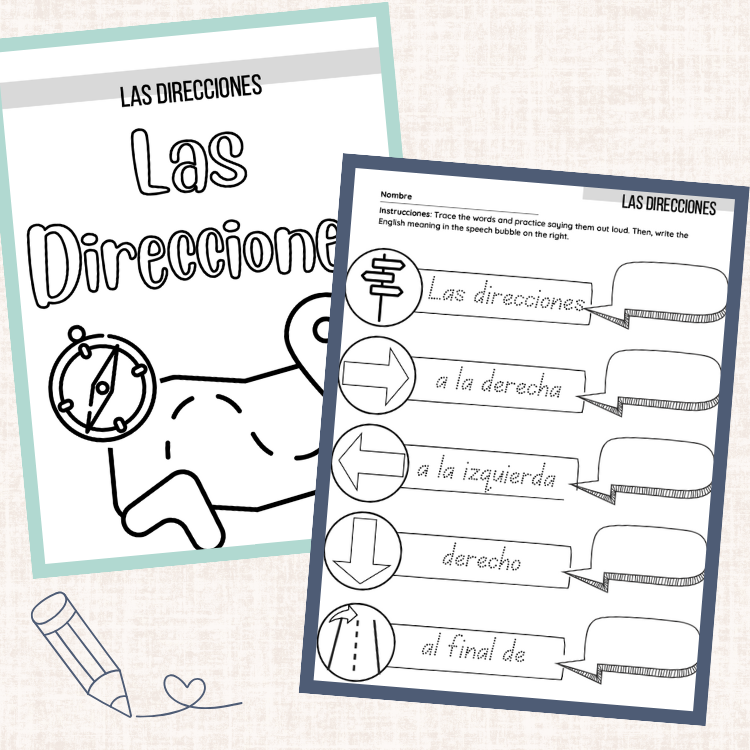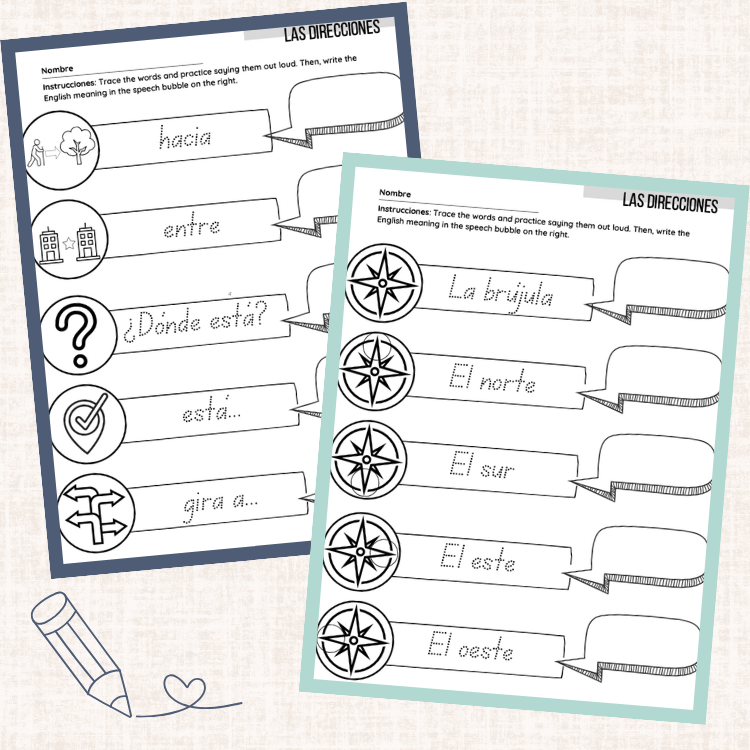Hey there, Joyful Journey Makers! Today, we’re diving into a topic that often gets overlooked in language classes—the power of writing and reading for L2 acquisition. If you’ve been focusing mainly on speaking and listening, it’s time to add some written magic to your teaching toolkit. Incorporating writing and reading isn’t just a good idea—it’s an essential strategy for building fluency, comprehension, and vocabulary retention. And what better way to do it than with my FREE Spanish Directions Writing Activity? 📍✍️ But first, let’s talk about the science behind why writing and reading can make such a big impact on your students’ language journey.
Why Writing and Reading Matter for Language Learning
Writing and reading might seem like quieter, more solitary activities compared to interactive games or lively conversations, but don’t underestimate their power! Here’s why they’re so effective for L2 learning:
The Neuroscience Behind Reading and Writing for L2 Acquisition
Okay, time for a little brain science! When students read and write in a new language, they’re activating areas of the brain responsible for visual processing, motor skills, and language production. This combination of multiple brain networks working together makes learning more efficient and leads to deeper understanding.
Studies have shown that when students read, they’re not just decoding words—they’re engaging with syntax, semantics, and context all at once (Zwiers, 2014). Writing, on the other hand, taps into the brain’s motor memory, meaning that physically forming letters and words helps solidify their meaning in ways that typing or reading alone can’t match. The more ways students can interact with language, the stronger their language skills become.
3 Key Benefits of Incorporating Writing and Reading into Your Language Classroom
- Improves Vocabulary Retention: Seeing, hearing, and writing a word repeatedly helps students move it from short-term to long-term memory.
- Reinforces Grammar and Sentence Structure: Writing gives students the chance to experiment with new language forms in a structured way.
- Boosts Comprehension: Reading helps students see how individual words fit into larger contexts, aiding in the understanding of both meaning and usage.
Tips for Using Writing and Reading Effectively
Ready to make writing and reading a bigger part of your class? Here’s how to get started:
- Start Small: Begin with simple activities like tracing words or matching exercises. Once students are comfortable, move on to creating sentences and short paragraphs.
- Use Graphic Organizers: Visual aids like Venn diagrams or flowcharts help students organize their thoughts and make sense of what they’re reading and writing.
- Combine with Speaking: After a writing activity, have students read their work out loud to a partner. This bridges the gap between written and spoken language and reinforces pronunciation.
Get Your Resource: Free Spanish Directions Writing Activity!
Now, let’s talk about how you can put all of this into practice with my FREE Spanish Directions Writing Activity. This resource is perfect for incorporating reading, writing, and speaking into your classroom—whether you’re teaching directions for the first time or reviewing vocabulary. With this activity, your students can practice tracing, translating, and using Spanish directional phrases like “a la derecha” (to the right) and “al final de” (at the end of).
What’s Included:
- Trace and Translate Practice Pages: Each worksheet includes space for students to trace key directional phrases, say them out loud, and then write the English translation. This three-step process hits all the major brain networks, making it easier for students to internalize the words.
- Speech Bubble Writing Prompts: After tracing and translating, students fill in speech bubbles with the corresponding English phrase. This encourages them to connect Spanish and English vocabulary visually and contextually.
Common Pitfalls When Using Writing and Reading Activities & How to Avoid Them
- Pitfall: Students zoning out during writing activities.
Solution: Add a speaking component! For example, after tracing each word, have them whisper it to a partner or use it in a sentence. - Pitfall: Lack of engagement with reading tasks.
Solution: Turn reading into a scavenger hunt! Use the worksheet content to have students find specific words or phrases and highlight them. - Pitfall: Relying solely on written work.
Solution: Mix it up! Use reading and writing as a springboard for partner discussions, group projects, or hands-on activities.
My Students’ Reactions: From Reluctant Writers to Map-Making Masters!
The first time I used this resource, I’ll admit—my students weren’t thrilled. (Let’s face it, tracing and writing can sound a little boring at first.) But once I turned it into a game, everything changed! I challenged them to race and see who could complete a perfect “directions map” first, using the vocabulary on the worksheets. Not only did they get competitive, but they also started using the words naturally in conversation.
I even had one student, normally hesitant to speak up, proudly show me his completed compass page and confidently tell me, “El gimnasio está a la derecha.” Talk about a win!
The Gist of it All
Writing and reading aren’t just passive activities—they’re powerful tools for L2 acquisition! My Spanish Directions Writing Activity helps your students build vocabulary, reinforce grammar, and boost confidence, all while having a blast practicing essential directional phrases. From tracing and translating to reading and speaking, this resource turns quiet practice into a comprehensive language experience.

Resources
Sousa, D. A. (2016). How the brain learns (5th ed.). Corwin Press.
Paul, A. M. (2012). How the brain learns best. Psychology Today.
Zwiers, J. (2014). Building Academic Language: Essential Practices for Content Classrooms. Jossey-Bass.




